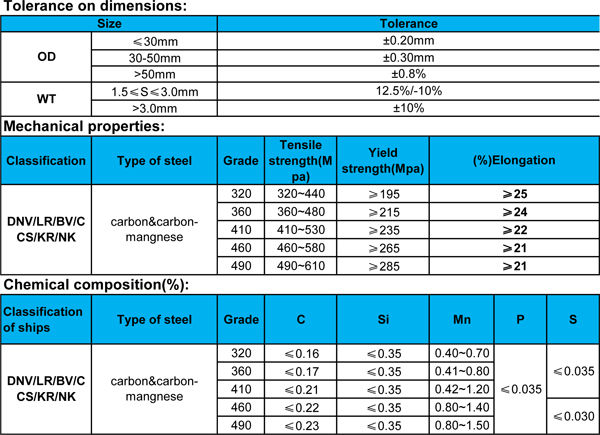
Pipe and Duct Systems Table A.1 Average roughness of commercial pipes. Table A.6 Data for copper pipes Weight per Linear Foot of Gallons of Pipe and Water per Water (lb) Linear Foot Diameter (in.) Material Nominal Inner Outer Copper Type L 1/4 0.315 0.375 0.16 0.004. Relative roughness - the ratio between absolute roughness an pipe or duct diameter - is important when calculating pressure loss in ducts or pipes with the Colebrook Equation. Relative roughness can be expressed as r = k / dh (1).
Fluid Flow Table of Contents
Hydraulic and Pneumatic Knowledge
Fluid Power Equipment
Please note that because of the variation in roughness in these materials depending on the source, the roughness values reported here have uncertainties ranging from ± 20 % for new wrought Iron to ± 70 % for riveted steel. A typical uncertainty in the roughness values can be assumed to be in the range ± − 30 -50 %.
This table lists the roughness Coefficients of Specific roughness, Hazen-Williams Coefficient and Manning Factor.
Specific Roughness | |||
|---|---|---|---|
5 x 10-2 (1.6 x 10-4) | |||
4.6 x 10-2 (1.5 x 10-4) | |||
3.0 (1 x 10-2) | |||
2.0 (7 x 10-3) | |||
2 x 10-3 (7 x 10-6) | |||
Iron, Cast new | |||
Iron, Wrough, new | |||
Iron, Galvanized, new | |||
Iron, Asphalted, cast | |||
Brass, new | |||
Concrete, smoothed | |||
Concrete, Rough | |||
Rubber, Smoothed | |||
Wood, Stave | |||
Sources: Hydraulic Institute, Engineering Data Book. Various vendor data compiled by SAIC, 1998 F.M. White, Fluid Mechanics, 7th edition | |||
Surface Roughness for Various New Polyethylene Pipes (PE Pipes)
Values for New Pipe and Recommended Design Values Reported by Reference (2) | |
Riveted steel | |
Concrete | |
Wood stave | |
Cast Iron – Uncoated | |
Cast Iron – Coated | |
Galvanized Iron | |
Cast Iron – Asphalt Dipped | |
Commercial Steel or Wrought Iron | |
Drawn Tubing | |
Uncoated Steel | |
Coated Steel | |
Uncoated Asbestos – Cement | |
Cement Mortar Relined Pipes (Tate Process) | |
Smooth Pipes | |
PE and other thermoplastics, | |
Brass, Glass and Lead) | |
Note: Pipes that have absolute roughness equal to or less than 0.000005 feet are considered to exhibit “smooth pipe” characteristics.
Relative roughness and friction factors for new, clean pipes for flow of 60°F (15.6°C) water (Hydraulic Institute Engineering Data Book, Reference 5) (1 meter 39.37 in = 3.28 ft).
Where:
f = friction factor
D = Diameter (inches)
∈/ D = Relative Roughness
∈= MEasure of pipe wall roughness in feet (meters)
References:
1. Swierzawski, Tadeusz J. (2000). Flow of Fluids, Chapter B8, Piping Handbook, 7th edition, Mohinder L. Nayyar, McGraw-Hill, New York, NY.
2. Lamont, Peter A. (1981, May). Common Pipe Flow Formulas Compared with the Theory of Roughness, Journal of the American Water Works Association, Denver, CO.
Related Resources:
© Copyright 2000 - 2021, by Engineers Edge, LLC www.engineersedge.com
All rights reserved
Disclaimer | Feedback
Advertising | Contact | Privacy Policy
Date/Time:
For each pipe material either a single pipe roughness value or a range of roughness values is normally provided by the manufacturer. The roughness value, usually denoted as e
 , is used in the calculating the relative roughness of a pipe against the size of its diameter.
, is used in the calculating the relative roughness of a pipe against the size of its diameter. Absolute Roughness
The roughness of a pipe is normally specified in either mm or inches and common values range from 0.0015 mm for PVC pipes through to 3.0 mm for rough concrete pipes.
Relative Roughness
The relative roughness of a pipe is its roughness divided by its internal diameter or e/D, and this value is used in the calculation of the pipe friction factor, which is then used in the Darcy-Weisbach equation to calculate the friction loss in a pipe for a flowing fluid.
Pipe Materials and Common Pipe Roughness Values
| Material | e (mm) | e (inches) |
| Concrete | 0.3 - 3.0 | 0.012 - 0.12 |
| Cast Iron | 0.26 | 0.010 |
| Galvanized Iron | 0.15 | 0.006 |
| Asphalted Cast Iron | 0.12 | 0.0048 |
| Commercial or Welded Steel | 0.045 | 0.0018 |
| PVC, Glass, Other Drawn Tubing | 0.0015 | 0.00006 |
Surface Roughness Of Copper Pipe
Pipe Materials and Pipe Diameter Database
Our Pipe Flow Expert software comes with its own database of pipe materials and pipe diameters, which includes the pipe roughness values and standard material schedules of many types of pipe. Users can also add their own pipe data for any material and any pipe size if required.
Pipe materials in the Pipe Flow Expert pipe database include Cast Iron (Class A,B and C), Copper Tube (Type X,Y,K,L,M), HDPE (SDR 7.3 to SDR 26), PVC (Schedule 40, 80, and CL100 to CL315), Stainless Steel (Schedule 5s, 10s, 40s), Steel (Schedule 40,80,160) and more.
Pipe Roughness Coefficient Table
Roughness Of Pvc Pipe
You can download Pipe Flow Expert for a free trial and see how it makes it easy to draw, design and calculate the flows and pressure drops in your pipe system.